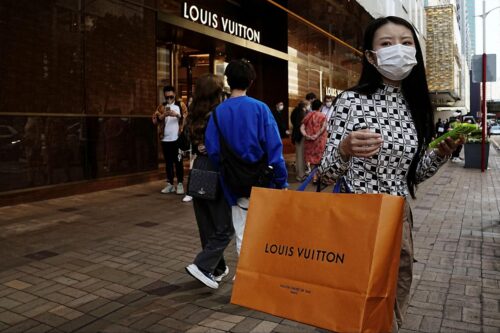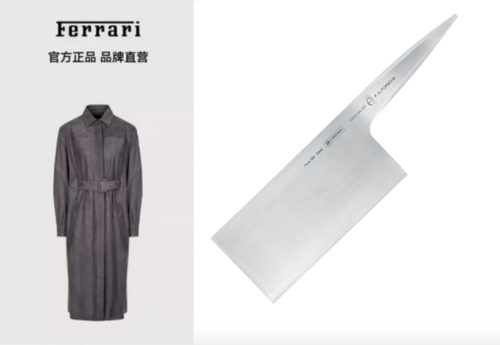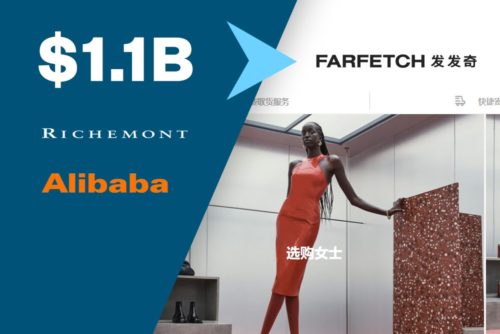Niche brands are on the rise as young Chinese consumers seek their own style
The rise of Chinese niche luxury brands.

Many Chinese consumers today are ditching well-recognized brands with big logos in favor of lesser-known brands that offer better value.
Interest in niche brands grew anywhere from 16% to 34% year-on-year in Asia, and is perceived to be the “new luxury,” according to a recent survey by brand distributor Bluebell Group.
Examples of “niche” range from European and American brands, such as Anya Hindmarch, Brandy Melville, and Valextra, to Chinese brands such as To Summer (观夏 guān xià), Duanmu Liangjin (端木良锦 duānmù liáng jǐn), and Annakiki.
The move toward niche is primarily being led by Gen Z. In 2021, young luxury shoppers said they preferred niche brands over well-known ones at more than twice the rate of luxury shoppers ages 26 to 35, and at five times the rate of those over 35.
And according to recent research by Anaïs Bournonville, co-founder of Reverse Group, older generations are now also shifting their luxury spending habits. For example, when asked to name their five favorite brands, names such as Anya Hindmarch and Brandy Melville popped up, when they might not have several years ago.
“Above anything else, luxury consumers buy niche brands to differentiate themselves,” Bournonville told The China Project.
Shifting priorities
For those who can’t afford luxury products, niche brands offer a chance to stand out. Zhōu Lèjiā 周乐嘉, 21, cares about her appearance and loves fashion, but she’s a student. That’s why she shops Vivienne Westwood and Annakiki, which she said she loves for their design and value.
All five Gen Z consumers interviewed for this article mentioned both design and value as their priorities when buying fashion and accessories. With youth unemployment in urban areas at a record high, China’s younger generation might be feeling the pinch.
Luxury brands may well be trying to shift their marketing. In 2021, 20% of luxury consumers were Gen Zers buying for the first time, while in 2023, Gen Z’s luxury consumption is projected to grow by 12%.
Beyond Gen Z, many are spending more conservatively across all categories, as the Chinese economy slows and consumer confidence decreases. Fifty-two percent of respondents to a survey by Oliver Wyman felt that value for money was more of a consideration to them than a year ago.
“Unlike my parents’ generation, who cared more about appearance and the social standing that a brand provides, the product and its design come first for me,” said Yeung San (王江洋森 Wáng Jiāng Yángsēn). But he hasn’t completely given up Hermès, Chanel, and Saint Laurent just yet. For him, it’s about finding the right combination between niche brands and luxury goods and creating his own style.
The shift away from big logos and brands seen to be “too commercial” is felt through social media, where jokes and expressions that dismiss popular brands are trending. For instance, “街香” (jiē xiāng), meaning “the scent from the streets,” equates commonly worn fragrances with street smells.
To Jillian Xin, the Buying Director of LABELHOOD, which owns independent designer brand boutiques and LABELHOOD Pioneer Fashion & Art Festival, this evolution of luxury consumers is natural. “As customers have more experience buying luxury products, they gradually want the excitement of discovering something new, and gravitate toward niche brands.”
What makes a niche brand successful
“Gen Z in particular is quite willing to try new brands and is more focused on the story,” according to Imke Routers, a partner at Oliver Wyman. Chinese customers are much more informed on the products and brands they buy than they used to be. In response, brands — both niche and well known — are investing in their story.
For example, brands organize exhibitions explaining their unique founding stories and history, or to demonstrate their artistic DNA. Diptyque’s Grand Tour pop-ups in 2021 followed the founders’ travels and historic location choices, which influenced their scents and perfumes.
An increasing focus on experiential shopping and storytelling has led to brands investing in historic locations and interesting designs. An example is Louis Vuitton’s Guangdong Hall location in Chengdu, a 200-year-old building where the brand opened its first restaurant and exhibition space in China. Similarly, niche perfume brand Byredo opened its unique store in Chengdu with a design that harkens back to traditional Chinese woodwork.
Chinese consumers also feel a sense of belonging and attachment to what a brand represents. For example, Chinese brand Roaringwild (咆哮野兽 páoxiāo yěshòu) does particularly well at encapsulating a “profound love for life” and a deep passion for street culture. According to Olivia Plotnick, the founder of Wai Social, this was essential to its wild success.
Although design takes precedence for Yeung San, he also mentions the connection he feels when someone recognizes where his clothes come from. “If you know, you know,” he says. “It makes me feel that we have something in common.” Along with this sense of belonging when people “know,” niche brands’ customers also connect through events, WeChat groups, and social media, primarily the lifestyle app Xiaohongshu.
This sense of community is reinforced by niche brands’ marketing often being slightly “hard to get,” a phenomenon more luxury brands have adopted, too. To Summer, the niche perfume brand, locates all of its shops in less commercial locations, requiring customers to go out of their way to find them.
From niche to mainstream, and vice versa
Of course, eventually, niche brands become more famous, and take their place in the inner circle. Within fragrance, which Bournonville sees as a precedent in this trend, Jo Malone, which in the West is fairly niche and used to also be in China, is now well known. This might also soon happen for certain niche fashion luxury houses.
The big-name luxury houses are also adapting to this deep desire to be unique. According to Morgane Nopper, a senior merchandiser at Louis Vuitton, China is the only location where the limited editions are not later extended or developed by the brand in any way, because customers want a guarantee that there will only be a few of these products worldwide.
For now, luxury consumers are buying both well-known and niche brands, and pairing them together. “As niche brands develop further, it will likely create greater brand choice and competition within these high-end brands — which will ultimately benefit consumers and force brands to be more creative,” said Harriet Sheffer, Outform’s marketing and strategy director for the Asia-Pacific region.



